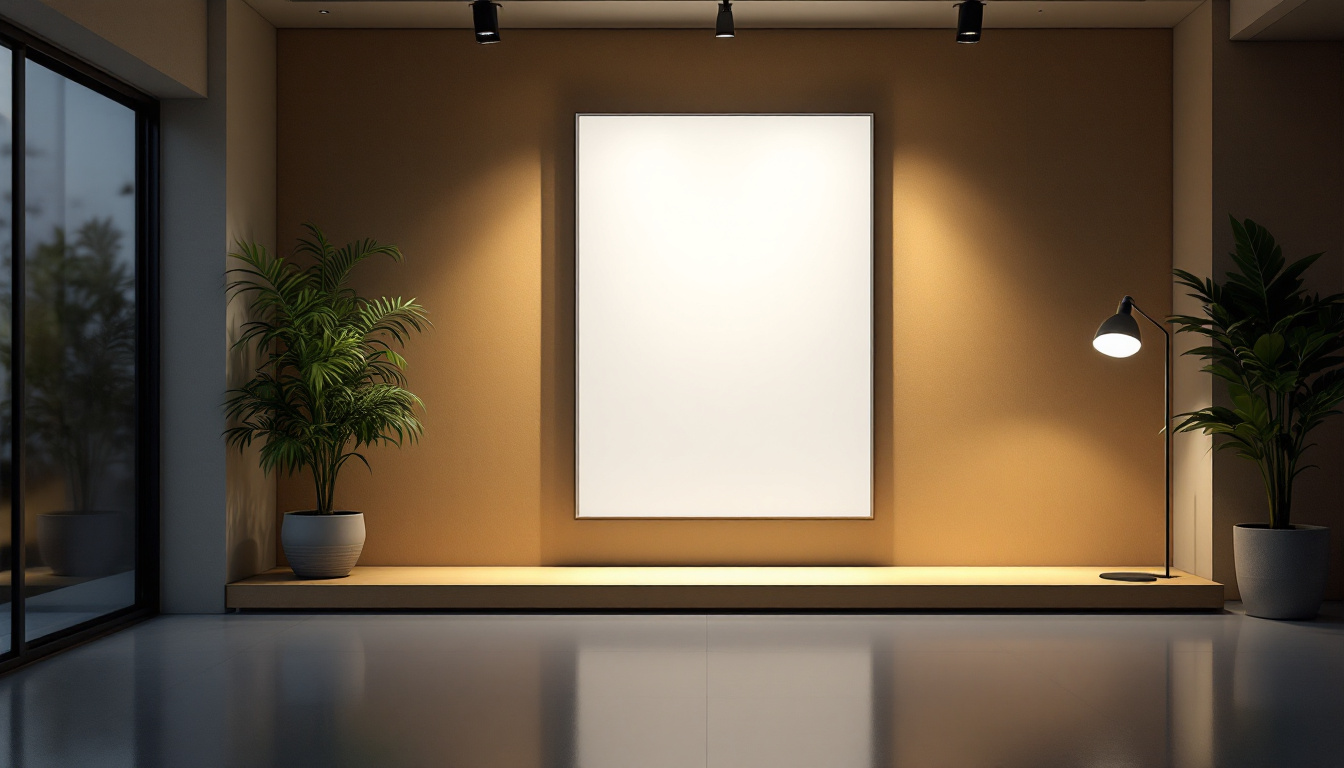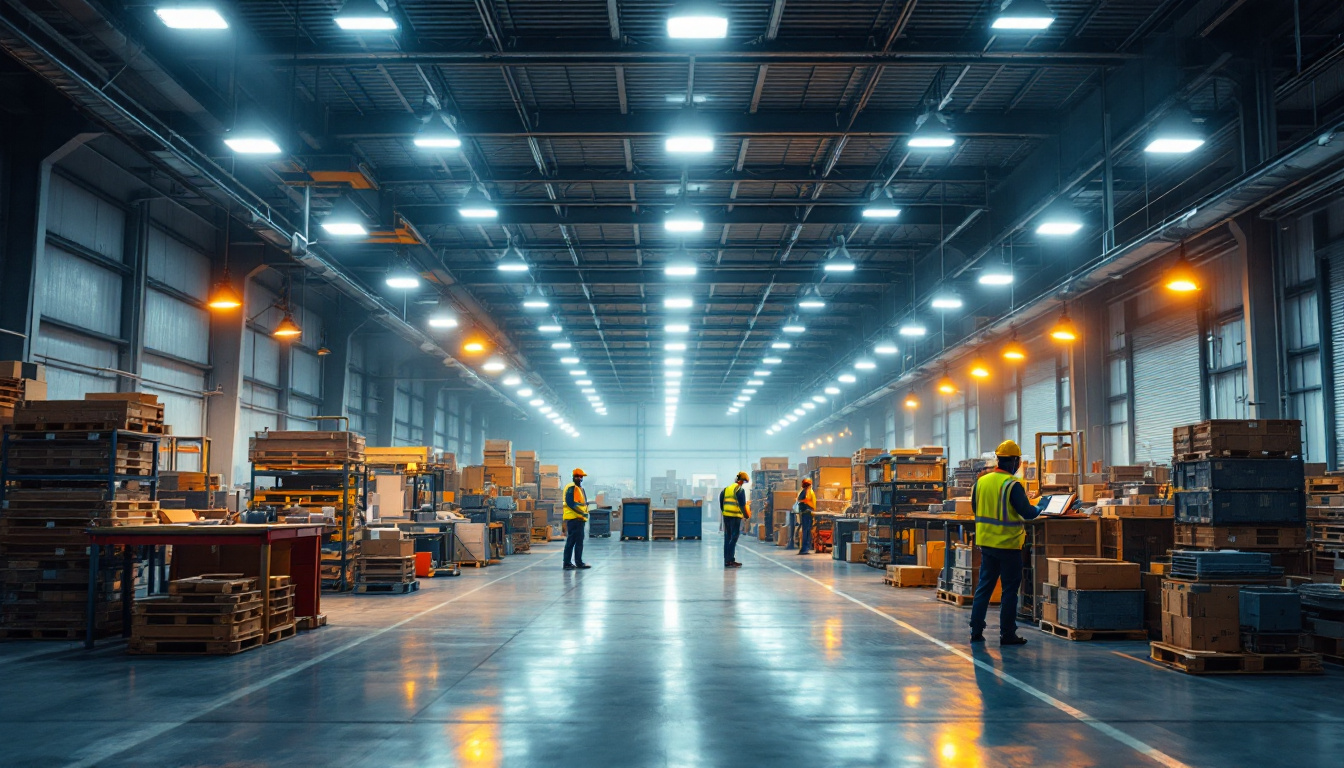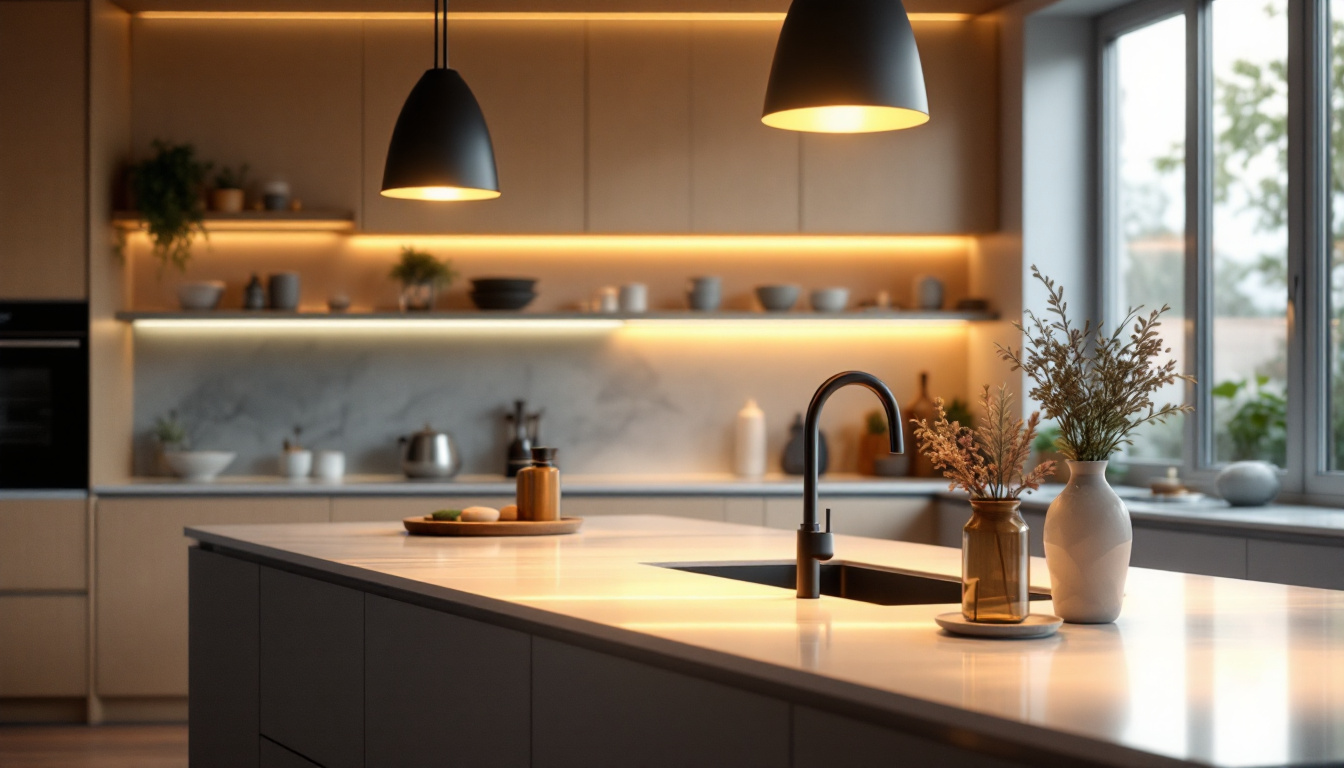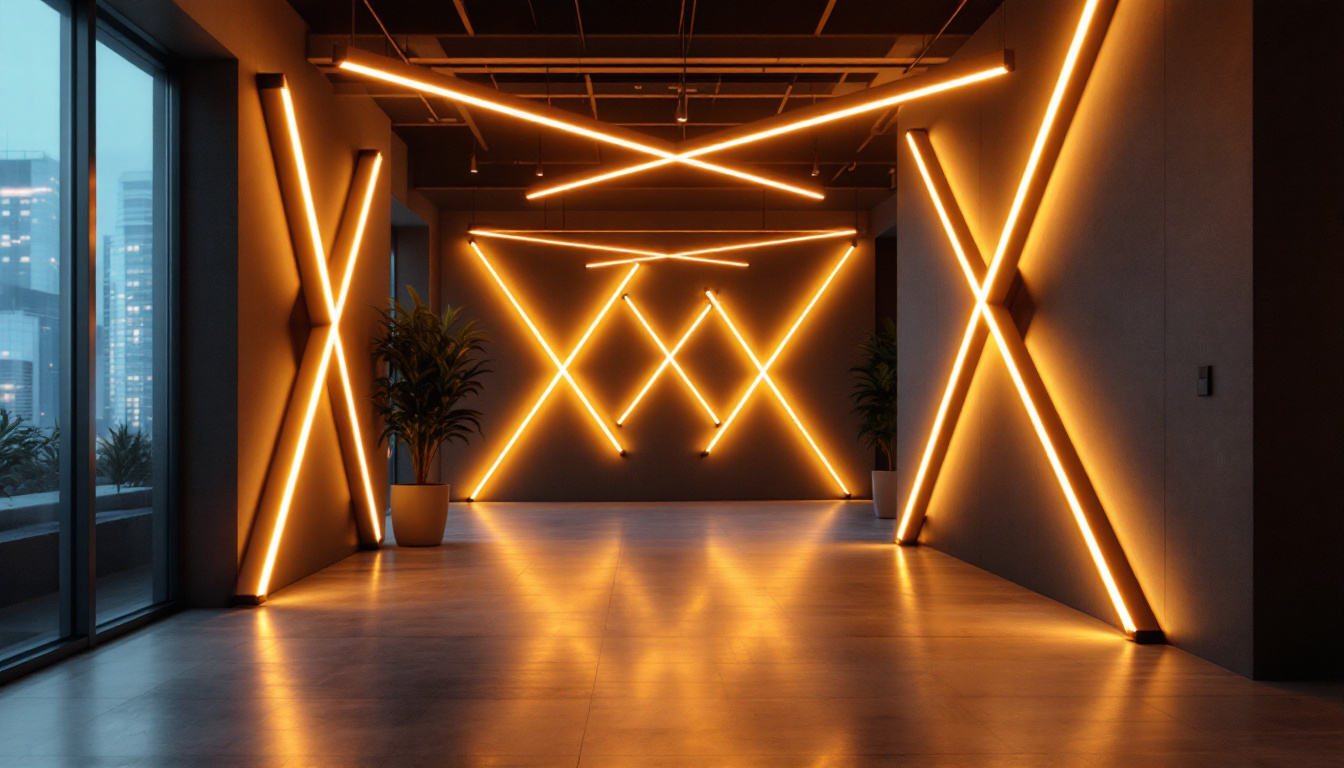

In the ever-evolving landscape of energy efficiency, the role of lighting has gained significant attention. As energy costs continue to rise and environmental concerns become more pressing, the demand for efficient lighting solutions has surged. This article explores the concept of “Light For Panel,” its implications for energy efficiency, and how lighting contractors can leverage this knowledge to enhance their projects.
The term “Light For Panel” refers to the strategic use of lighting in relation to electrical panels and distribution systems. This concept is not merely about illuminating a space; it encompasses the integration of lighting design with energy management systems to optimize efficiency. By understanding how light interacts with electrical panels, contractors can create environments that are not only functional but also energy-efficient.
Proper lighting is essential in any workspace, particularly in areas housing electrical panels. Adequate illumination ensures that technicians can safely and efficiently perform maintenance and inspections. Poor lighting can lead to errors, accidents, and ultimately increased energy consumption due to inefficiencies in the system. Therefore, the design and placement of lighting fixtures should be a priority for contractors. Moreover, the color temperature of the lighting can also play a critical role; cooler light temperatures can enhance visibility and focus, while warmer tones might create a more comfortable atmosphere. This nuanced approach to lighting can significantly impact the overall productivity and safety of the workspace.
Integrating lighting with energy management systems can significantly enhance energy efficiency. By using smart lighting solutions that adjust based on occupancy or natural light levels, energy consumption can be minimized. These systems can communicate with electrical panels to optimize power distribution, reducing waste and lowering operational costs. Furthermore, advanced lighting technologies, such as LED fixtures with built-in sensors, can provide real-time data on energy usage, enabling facilities managers to make informed decisions about their lighting strategies. This dynamic interaction not only supports sustainability goals but also promotes a proactive approach to energy management, ensuring that facilities are always operating at peak efficiency.
In addition to improving efficiency, the right lighting design can also enhance safety and compliance with industry regulations. Many standards dictate minimum lighting levels for workspaces, especially those involving electrical equipment. By adhering to these guidelines, organizations can mitigate the risk of accidents and ensure that they meet legal requirements. Moreover, well-lit environments can deter unauthorized access and enhance security, making it vital for contractors to consider safety as a key component of their lighting strategy. This proactive stance not only protects employees but also safeguards valuable equipment and infrastructure from potential hazards.
energy-efficient lighting offers a myriad of benefits that extend beyond mere cost savings. For lighting contractors, understanding these advantages can be pivotal in influencing client decisions and enhancing project proposals.
One of the most immediate benefits of energy-efficient lighting is the reduction in electricity bills. By transitioning to LED or other energy-efficient lighting options, businesses can see substantial savings over time. These savings can be reinvested into other areas of the business or used to fund further energy efficiency initiatives. Additionally, energy-efficient lighting typically has a longer lifespan compared to traditional incandescent bulbs, which means less frequent replacements and lower maintenance costs. This longevity not only translates to financial savings but also minimizes the hassle of regular upkeep, allowing businesses to focus on their core operations.
Energy-efficient lighting also plays a crucial role in reducing a business’s carbon footprint. By consuming less energy, companies contribute to lower greenhouse gas emissions, aligning with global sustainability goals. Lighting contractors can emphasize this aspect to clients who are increasingly concerned about their environmental impact. Furthermore, many energy-efficient lighting solutions are designed to be recyclable, reducing waste and promoting a circular economy. This eco-friendly approach not only appeals to environmentally conscious consumers but also enhances a company’s reputation as a responsible corporate citizen, potentially attracting new clients who prioritize sustainability in their purchasing decisions.
Beyond financial and environmental benefits, proper lighting has a direct impact on workplace safety and productivity. Well-lit areas reduce the risk of accidents and injuries, while also enhancing employee morale and efficiency. When employees feel comfortable and safe in their environment, their productivity levels tend to increase, benefiting the entire organization. Moreover, studies have shown that the quality of lighting can influence mood and cognitive function. Natural light, or lighting that mimics it, can help regulate circadian rhythms, leading to better sleep patterns and overall well-being. By incorporating energy-efficient lighting solutions that prioritize both functionality and aesthetics, businesses can create a more inviting and stimulating work environment that fosters creativity and collaboration among employees.
When it comes to selecting lighting solutions for panels and surrounding areas, several factors must be considered. The right choice can significantly influence energy efficiency and overall effectiveness. Factors such as the size of the space, the intended use, and the aesthetic goals all play a crucial role in the decision-making process. Additionally, understanding the local regulations and standards for lighting can help ensure compliance and promote safety in the environment.
There are various lighting technologies available, each with its own advantages and disadvantages. LED lighting, for instance, is widely recognized for its energy efficiency and longevity, often lasting up to 25,000 hours or more. Fluorescent lamps, while less efficient than LEDs, may still be suitable for certain applications, particularly in environments where initial cost is a significant concern. Moreover, incandescent bulbs, although less common today, provide a warm light that can enhance the ambiance of residential spaces. Understanding the specific needs of a project will help contractors make informed decisions about which technology to employ, taking into account factors like color temperature and color rendering index (CRI) to ensure the desired atmosphere is achieved.
Lighting design is not just about choosing the right fixtures; it also involves strategic placement and control systems. Contractors should consider factors such as the layout of the space, the tasks being performed, and the natural light available. Utilizing a layered lighting approach, which combines ambient, task, and accent lighting, can create a well-balanced environment that enhances both functionality and energy efficiency. Additionally, incorporating smart lighting controls, such as dimmers and motion sensors, can further optimize energy use and provide flexibility in adjusting the lighting according to the time of day or specific activities. The integration of daylight harvesting techniques, where natural light is maximized while minimizing glare and heat gain, can also contribute to a sustainable lighting design that promotes well-being and productivity in the space.
In addition to the technical aspects of lighting, contractors must also be aware of regulatory standards and potential incentives for energy-efficient solutions. Compliance with local and national codes is essential for any lighting installation.
Many regions have established energy codes that dictate the minimum efficiency standards for lighting systems. Familiarizing oneself with these regulations is crucial for contractors to ensure that their projects meet legal requirements. Non-compliance can lead to fines, project delays, and reputational damage. Moreover, staying updated on changes in legislation is vital, as energy codes are frequently revised to reflect advancements in technology and shifts in environmental policy. Contractors should consider attending workshops or training sessions to keep abreast of these developments, which can also provide networking opportunities with other professionals in the field.
Various governmental and utility incentives are available for businesses that invest in energy-efficient lighting solutions. These can include rebates, tax credits, and grants that help offset the initial costs of installation. Contractors should stay informed about these opportunities to better assist their clients in maximizing their return on investment. Additionally, many utility companies offer programs that not only incentivize energy-efficient upgrades but also provide technical support and resources to facilitate the transition. By leveraging these incentives, contractors can enhance their service offerings, making energy-efficient solutions more appealing to potential clients. This not only contributes to a more sustainable future but also positions contractors as knowledgeable leaders in the industry, capable of guiding clients through the complexities of energy efficiency and compliance.
The field of lighting is continuously evolving, with new technologies and trends emerging regularly. Staying ahead of these trends can provide contractors with a competitive edge and enhance their service offerings.
Smart lighting systems are becoming increasingly popular, allowing for greater control and customization. These systems can be programmed to adjust based on time of day, occupancy, or even energy demand. For contractors, incorporating smart lighting solutions into their projects can significantly enhance energy efficiency and user experience.
Human-centric lighting focuses on the well-being of occupants by mimicking natural light patterns. This approach has been shown to improve mood, productivity, and overall health. As awareness of the importance of human-centric design grows, contractors may find increased demand for such solutions in commercial and residential projects.
In conclusion, the concept of “Light For Panel” plays a pivotal role in enhancing energy efficiency within various environments. By understanding the importance of proper lighting, the benefits of energy-efficient solutions, and the latest trends in the industry, lighting contractors can significantly impact their projects and clients. The integration of lighting with energy management systems, adherence to regulatory standards, and the adoption of smart technologies will pave the way for a more sustainable and efficient future.
As the demand for energy-efficient solutions continues to grow, lighting contractors who prioritize these aspects will not only improve their service offerings but also contribute to a more sustainable world. The future of lighting is bright, and those who embrace these changes will undoubtedly lead the charge toward greater energy efficiency.
Ready to elevate your lighting projects and embrace the future of energy efficiency? At LumenWholesale, we provide lighting contractors with the highest quality, spec-grade lighting products at unbeatable wholesale prices. Say goodbye to local distributor markups and hello to superior lighting solutions that meet the highest industry standards. With our hassle-free bulk buying and free shipping, you can ensure your projects shine with reliability and high performance. Don’t compromise on quality or value—discover wholesale lighting at the best value today and light up your work with confidence and convenience.

Discover the essential reasons why commercial wholesale lighting is a game-changer for lighting contractors.

Unlock the secrets of warehouse lighting with our comprehensive guide tailored for lighting contractors.

Explore the transformation of bar lighting in kitchens, from traditional designs to innovative solutions that enhance ambiance and functionality.

Discover the transformative potential of X-shaped linear lights in architecture.
Get notified when NEW deals are released.
Optimize your budget with wholesale discounts.
Only top-quality, specification-grade lighting products.
No additional costs at checkout - what you see is what you pay.
We understand the unique needs of contractors.